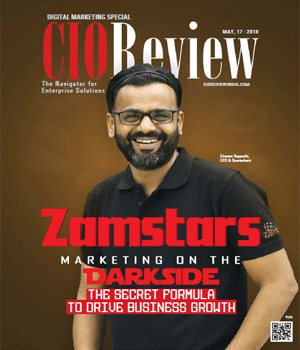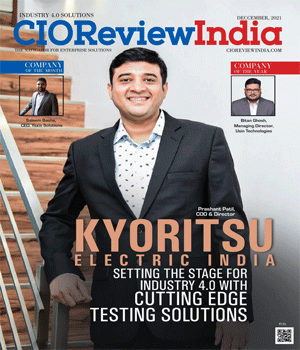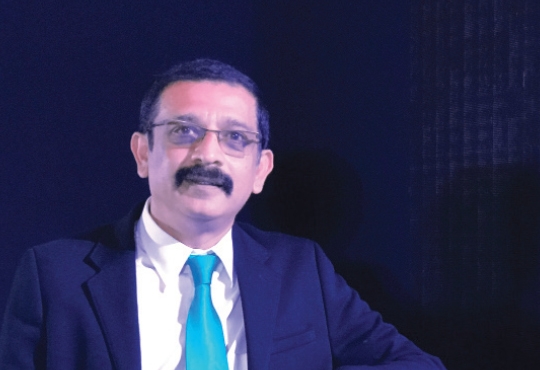
IT Transcendence - Driving Marketing with Data, Technology and Experiences
Avinash Jhangiani, Chief Innovation Officer, Omnicom Media Group | Wednesday, 25 January 2017, 06:18 IST
 According to Gartner, Artificial Intelligence, Virtual and Augmented Reality, and Digital Technology Platforms are some of the top strategic technology trends for 2017. As these technologies increasingly become a critical enabler for marketing and customer experience, there comes the need and opportunity for IT to play a strategic role in defining the future for Marketing.
According to Gartner, Artificial Intelligence, Virtual and Augmented Reality, and Digital Technology Platforms are some of the top strategic technology trends for 2017. As these technologies increasingly become a critical enabler for marketing and customer experience, there comes the need and opportunity for IT to play a strategic role in defining the future for Marketing.
The New Currency
If the old currency of marketing was about using buying-clout to lower costs, the new currency is about using data-clout to increase value. Extracting value from data requires the best data and technology platforms, but it also requires a new philosophy for how we organise data, and how we organise people to action it. The new currency for value creation in marketing is Consumer, Content, Context, Content and Cost.
Businesses that are able to shift strategies from targeting masses to individuals, with personalization and data driven creativity, will gain significant competitive advantage. As the number of channels and touchpoints increase with the Internet of Things, advancements in programmatic media and AI driven marketing are evolving the marketer’s tool set to capitalize on this opportunity.
In order to make an impression with tomorrow's consumers, we must first understand changing behaviors, reactions and emotions of consumer and then the demographic and psychographic attributes. Marketing needs to shift from KPIs (key performance indicators) to KBIs (key behaviour indicators).
The worlds of customer relationship management (CRM) and addressable media have collided. All channels are CRM informed. The magic in marketing currently is about using data technology to make decisions. Today, it’s about integrating CRM and advertising data, tomorrow with the growing penetration of wearables, it will be about directly accessing pulse rate, sweat levels, and even scanning facial expressions to determine simple emotions such as whether you are calm or excited.
As marketers continue on the path to gather more consumer data in real-time, there will be a constant need to automate marketing processes and make our algorithms more sentient.
The Rise of the Human Cyborg
It is clear that the relationship between human and algorithms is changing.
Today 61 percent of internet traffic is non-human. As technology, data and AI continue to penetrate our lives, we will see algorithms and human will learn to co-exist. Algorithms are increasingly taking over human decision making.
Google’s recently launched Allo, Alexa from Amazon, Siri from iPhone and Cortana from Microsoft are Virtual Personal Assistants (VPAs) are evolving to improve our daily lives, interacting and shopping for you in the future.
At Cannes Lions Festival this year, we saw algorithms compose music (Jukedeck), create impeccable artwork (The Next Rembrandt), and beat a professional player at the game of Go (Google DeepmindAlphago).
Marketers will need to quickly adapt as VPAs start taking over consumer's activities and represent the person in the real world. They will need to market to the consumer as well as influence the algorithm. Programmatic media has unlocked tremendous potential in how we tell stories in paid media online, and programmatic creative enables data and creativity to come together to tell brand stories in a more resonant and effective way than ever before.
The internet is all set to wake up with the human cyborg.
Experience rises above Technology
As the technology landscape continues to evolve, we pay too much attention on the technology instead of connecting with consumers that matter. Consumers are humans. And humans don't connect with technology. They interact and connect with emotions and people respectively. So before providing a logical reason for a person to buy into you, you need to emotionally connect with him. Marketing needs to get better at telling stories and creating experiences that emotionally connect with humans (not consumers).
There is enough evidence to show that today consumers don’t buy products, they buy experiences. Experience is the product. Experience is the brand. Experience drives growth. Consider the recent viral sensation of Pokemon Go where Augmented Reality technology enables shareworthy ‘phy-gital’ experiences that blend the physical and digital worlds.
Also with Virtual Reality taking over from video, the future of experience-driven marketing is inevitable. The ‘Field trip to Mars’ experience by Lockheed Martin and ‘New York Times VR’ case studies are only the beginning of innovative, immersive experiences for brands.
As we continue to see digital as an extension of ourselves with Mixed Reality technology such as Hololens and Meta, the new experience wave is set to delight the customer at every step in the journey. This, in turn, should see organisations rapidly innovating and disrupting themselves.
CIO Viewpoint
Industry 4.0: The Disruptive Force
By In conversation with Murali Raj G R, CIO, HIL
Navigating Constant Change: A CIO's Rules of...
By Jason Lichtenthal, SVP, CIO, The PURE Group of Insurance Companies
How to Raise your Digital Quotient?
By Rajan Venkataraman, Chief Technology Officer, NIIT
CXO Insights
5G Will Bring A Data Tsunami: Can Your Data...
By Nikhil Korgaonkar, Regional Director, Arcserve India & SAARC
Machine Learning Trends In 2021
By Kavitha Siddada, Head - Design Engineering, Shell
The Rise Of Developer Led Innovation &...



.jpg)





